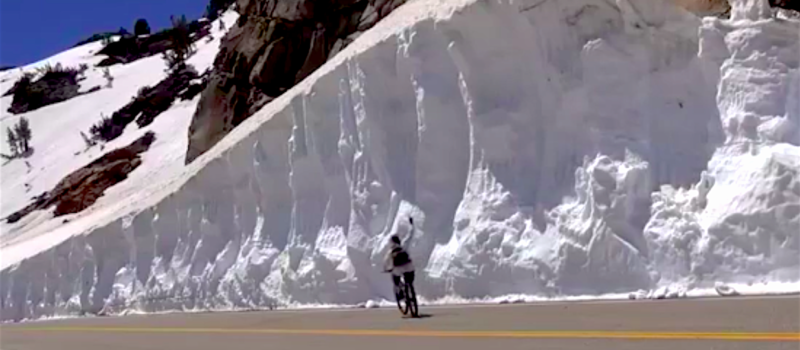As far as DWR statement, I imagine that was just cautious wording from a PR (not a engineering) standpoint
just in case. They have access to all the best models and forecasts. By 20 May, they would have known the releases/snowmelt/remaining snow cover put them in pretty good shape, but why stick their neck out and actually say
"...No more releases..."? A sufficiently powerful Pineapple Express two weeks later (now) would leave them with egg on their face - again.
DWR made that statement on the 20th, but started ripping things up in a serious way last week. A release after that point would have been problematic - erosion, debris in river, etc. Not catastrophic, but bad. Still, their actions last week tell me they were sufficiently confident of the low risk that they proceeded despite their earlier statement. If they ended up being wrong today, they would have reminded us that they did anticipate one more release. Expectations management, I guess.
Regional differences and weather patterns are enough to explain why the Oroville Reservoir basin melted off before the rest of the Sierra this year. They might get blasted next winter while the south remains dry. I've only been watching the weather there closely this year, but there is nothing like a consistent pattern across the entire Sierra. It's patchy and precipitation is often in narrow swaths. Tahoe and the eastern ranges generally get a lot more snow than the northern or southern ranges.
The 30+ inches of snow-water equivalent mostly applied to the Sierra mountain tops in the Oroville Watershed. Most of the catchment area had far less than that and it melted off weeks ago. They had a lot of snow this year, but nothing like the Tahoe snowpack below.

Those little blue areas on the snowmelt forecast (mountain tops/north faces) still do have several feet of snow and probably over 30" of snow water equivalent, but just in a few square km area. I'm sure there's still a risk of localized flooding from heavy melt runoff under those peaks, but nothing that translates to much of an effect overall on the Feather River forks.
I'm not familiar with the summer weather patterns there to speak to the possibility of torrential rains or another Pineapple Express in the Oroville watershed, but I don't think summer rain has been much of a problem there - at least not to the extent that it would force another release from the dam.
Hydro plant releases should be enough for this summer. I expect them to work well into December as well - the Nov. 1 'deadline' is another managing expectations thing. It would be extraordinary if they ever had to spill in November.
The trouble with DWR hiding everything at Oroville Dam behind self-imposed or bogus CEII secrecy is that they can't even point out when they do something good/right for a change. It
appears they may have installed new piezos or flow gauges on the weir drains. I believe seepage was measured previously by manual inspection of drain flow/catchment at a single point - not sure.
Bill Husa of the ChicoER took this great Google 360 image from the top of the gate house on June 1st (h/t Dan Reidel on Twitter).
If you pan over to the downstream side of the e-spillway weir, you can see a series of three little pads, each with a ground-level square white cover with some metal tubes protruding - the tallest of which looks like a gooseneck vent.
Screen caps from the image:

A closer view below with a nearby railroad tie included for scale. A common U.S. railroad tie is 8' (2.4m) long.

I don't have any specific information on what these are - piezos/flow gauges is just a guess. For all I know, they might be vent holes to DWR's secret underground lair. But that would be CEII, so you didn't hear that from me.
Plans are to add a pretty substantial RCC apron on the downstream side of the weir, so these would eventually be under several feet of concrete. They would have to build some kind of access to them or just remount higher on the surface of the new apron.
On old blueprints, the weir was shown to have a rectangular open box drain at grade that runs along the center of it's length, with T's every 40' or so emptying to the downstream side of the weir at the very bottom. They were not visible because the bottom edge of the monoliths were a few feet below the ground surface.
There appeared to be some kind of piping related to these drains washed out after the spill, but you couldn't make out much on how many there were or how they were accessed. The one blurry photograph that gave any clue suggested that at least one under-weir drain was piped to a small, square concrete basin, maybe 4'x4' and a foot deep, topped with a manhole cover. That manhole cover was never visible in any old photographs, so this may just have been something like a buried junction box for more than one drain.
I don't know if the new little access points are actually related to the under-weir drains or if they're piezometers to measure underground seepage independent of the drains. Either would make sense.
No wonder this is CEII - in either case noted above, these are obvious attack vectors for terrorists. How many times have we read about jihadis going after under-weir drains? Why, if I had a nickel for every time I read about these kind of tragic attacks...


